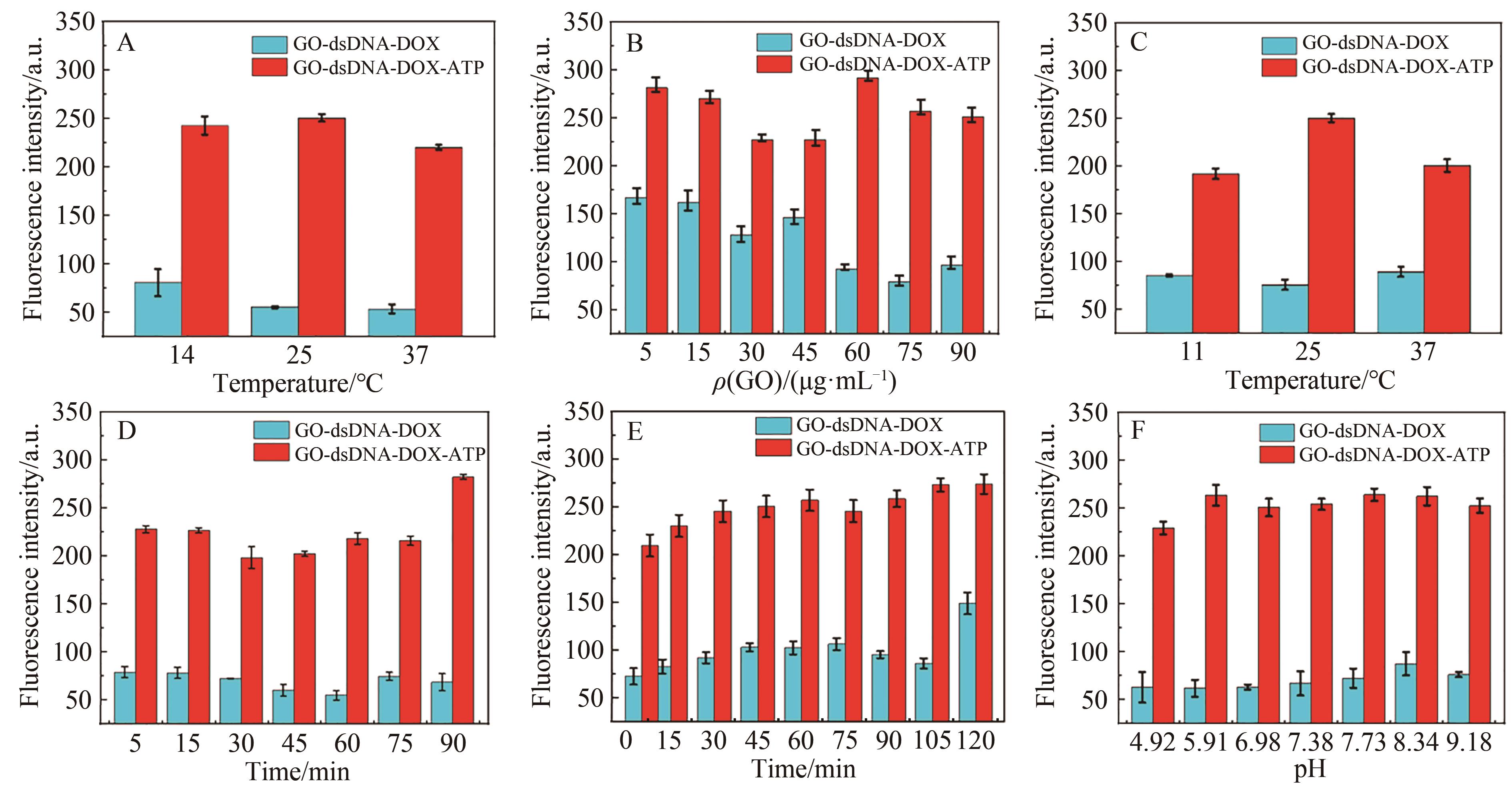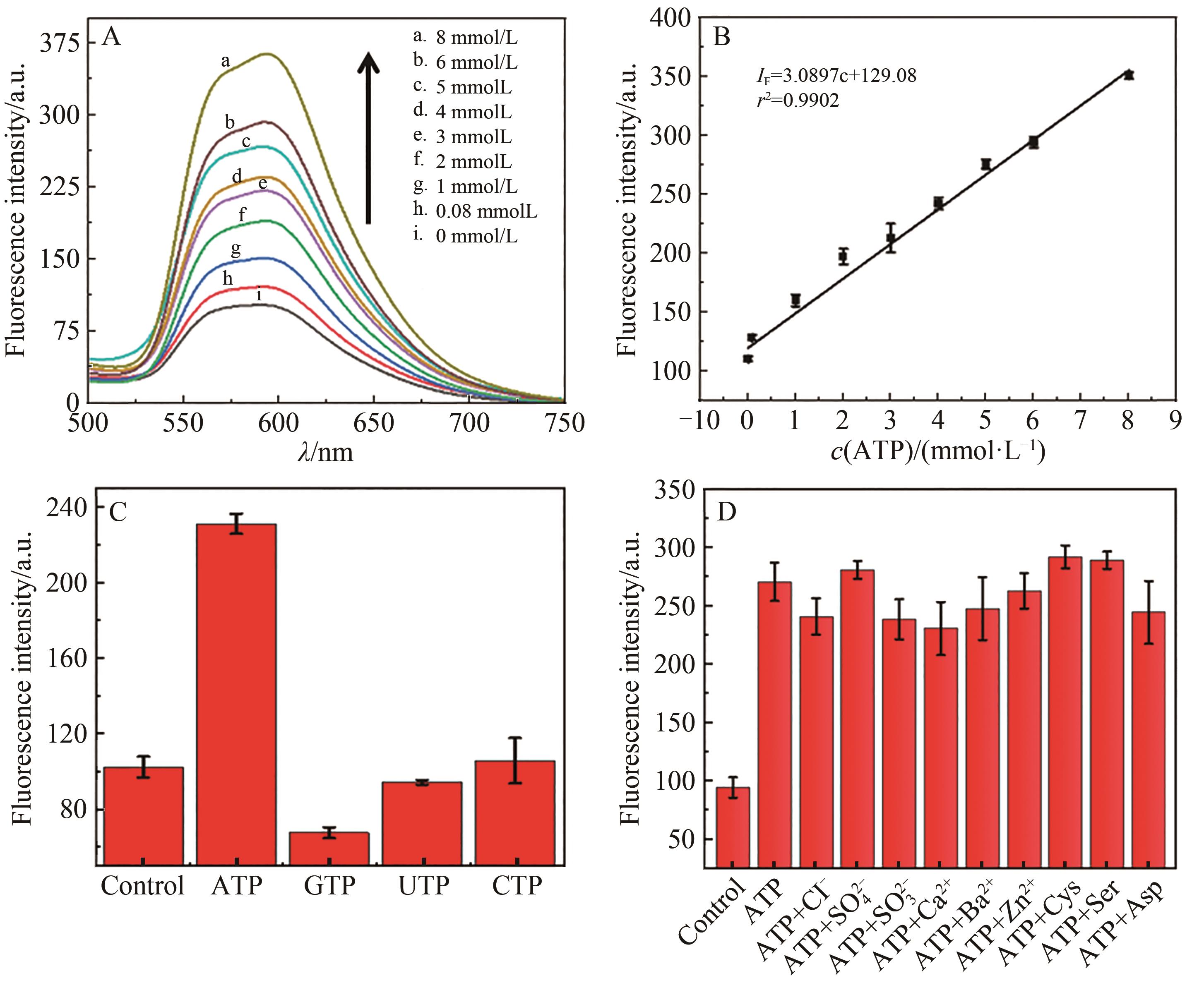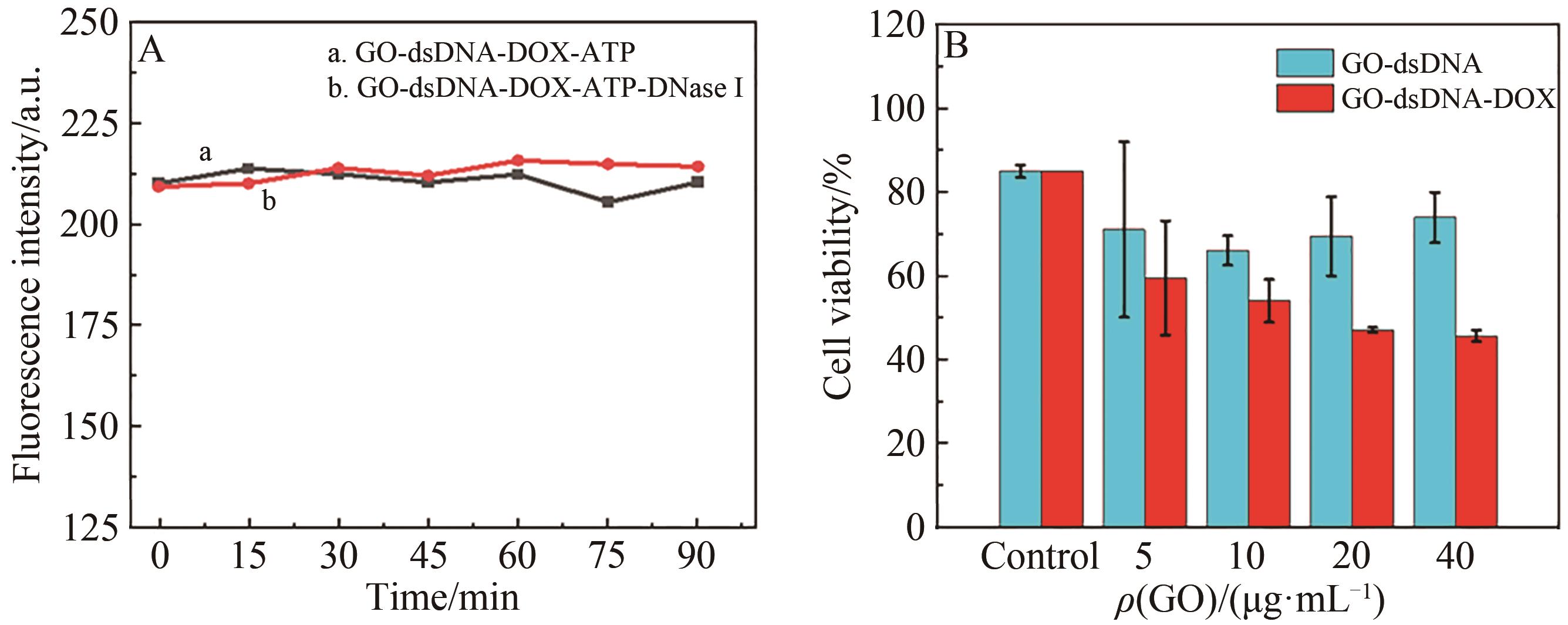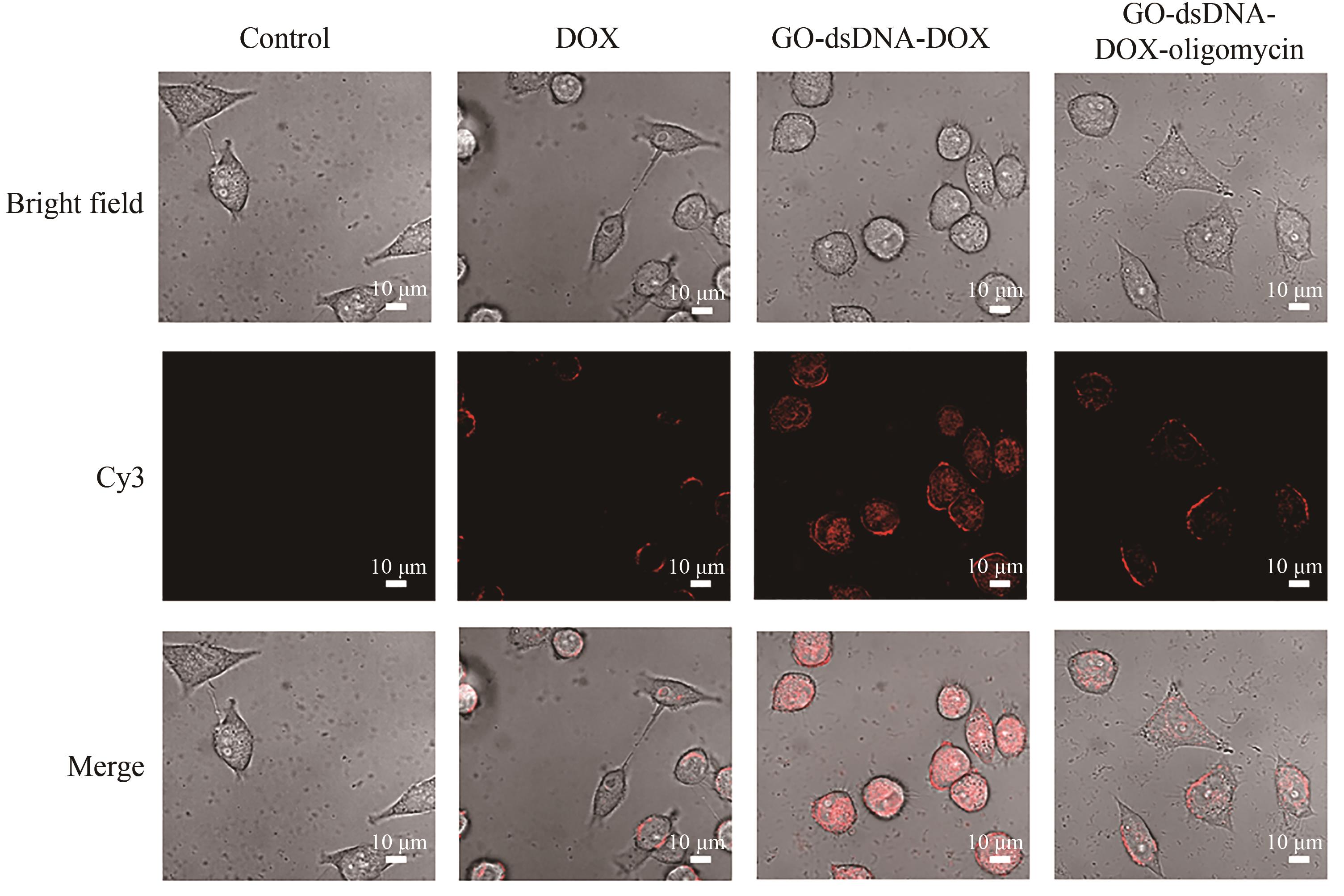| 1 |
ZHANG P, GUO X, GAO J, et al. A dual-control strategy by phosphate ions and local microviscosity for tracking adenosine triphosphate metabolism in mitochondria and cellular activity dynamically[J]. ACS Sens, 2021, 6(11): 4225-4233.
|
| 2 |
VELASQUEZ S, LASQUEZ L, VALDEBENITO S, et al. Circulating levels of ATP is a biomarker of HIV cognitive impairment[J]. Ebiomedicine, 2020, 51: 152-169.
|
| 3 |
DI Z, ZHAO J, CHU H, et al. An acidic-microenvironment-driven DNA nanomachine enables specific ATP imaging in the extracellular milieu of tumor[J]. Adv Mater, 2019, 31: 1901885.
|
| 4 |
MIMONO F, TATSNMI K, SHIMIZU S, et al. Exploitation of elevated extracellular ATP to specifically direct antibody to tumor microenvironment[J]. Cell Rep, 2020, 33(12): 108542.
|
| 5 |
SCHIFMAN R B, WIEDEN M, BROOKER J, et al. Bacteriuria screening by direct bioluminescence assay of ATP[J]. J Clin Microbiol, 1984, 20(4): 644-648.
|
| 6 |
SANTIANA J J, SAWANT S S, ROUGE J L. Multi-layered stimuli responsive DNA micelles for the stepwise controlled release of small molecules[J]. J Mater Chem B, 2022, 10(37): 7518-7526
|
| 7 |
FANG B Y, YAO M H, WANG C Y, et al. Detection of adenosine triphosphate in HeLa cell using capillary electrophoresis-laser induced fluorescence detection based on aptamer and graphene oxide[J]. Colloid Surface B, 2016, 140: 233-238.
|
| 8 |
XU Y, KANG Q, YANG B, et al. A nanoprobe based on molybdenum disulfide nanosheets and silver nanoclusters for imaging and quantification of intracellular adenosine triphosphate[J]. Anal Chim Acta, 2020, 1134: 75-83.
|
| 9 |
TOPKAYA S N, CETIN A E. Electrochemical aptasensors for biological and chemical analyte detection[J]. Electroanalysis, 2021, 33(2): 277-291.
|
| 10 |
LV W X, FU B Q, LI M L, et al. Determination of IC50 values of anticancer drugs on cells by D2O-single cell Raman spectroscopy[J]. Chem Commun, 2022, 58(14): 2355-2358.
|
| 11 |
LIN C S, YAO Q H, CHEN X. A label-free electrochemiluminescent sensor for ATP detection based on ATP-dependent ligation[J]. Talanta, 2016, 154: 492-497.
|
| 12 |
ZHENG X, PENG R, JIANG X, et al. Fluorescence resonance energy transfer-based DNA nanoprism with a split aptamer for adenosine triphosphate sensing in living cells[J]. Anal Chem, 2017, 89(20): 10941-10947.
|
| 13 |
LI L L, LV W Y, WANG Y, et al. DNA logic nanodevices for real-time monitoring of ATP in lysosomes[J]. Anal Chem, 2021, 93(46): 15331-15339.
|
| 14 |
KRISSANAPRASIT A, KEY C M, PONTULA S, et al. Self-assembling nucleic acid nanostructures functionalized with aptamers[J]. Chem Rev, 2021, 121(22): 13797-13868.
|
| 15 |
STEFAN G, HOSU O, DEWAEL K, et al. Aptamers in biomedicine: selection strategies and recent advances[J]. Electrochim Acta, 2021, 376: 137994.
|
| 16 |
LIU M T, MA W J, LI Q S, et al. Aptamer-targeted DNA nanostructures with doxorubicin to treat protein tyrosine kinase 7-positive tumours[J]. Cell Prolif, 2019, 52: e12511.
|
| 17 |
LI L L, LV W Y, HUANG C Z, et al. DNA logic nanodevices for real-time monitoring of ATP in lysosomes[J]. Anal Chem, 2021, 93(46): 15331-15339.
|
| 18 |
CHAI X, FAN Z, LI L L, et al. A redox-activatable DNA nanodevice for spatially-selective, and gated imaging of ATP and glutathione in mitochondria[J]. Nano Lett, 2021, 21(23): 10047-10053.
|
| 19 |
RAZAQ A, BIBI F, ZHENG X X. Review on graphene-, graphene oxide-, reduced graphene oxide-based flexible composites: from fabrication to applications[J]. Materials, 2022, 15(3): 1012.
|
| 20 |
DAVID L D, DOLORES M M, VELAZQUEZ M M, et al. The behavior of graphene oxide trapped at the air water interface[J]. Adv Colloid Interfae, 2020, 286: 102312.
|
| 21 |
WEI W X, WANG L L, HUANG Q L, et al. Controlled synthesis of biocompatible rGO@CD@Au nanocomposites for trace detection for doxorubicin by Raman imaging spectroscopy[J]. J Alloys Compd, 2019, 783: 37-43.
|
| 22 |
LI Y L, LI N, TANG B, et al. Reversing multidrug resistance by multiplexed gene silencing for enhanced breast cancer chemotherapy[J]. ACS Appl Mater Interfaces, 2018, 10(18): 15461-15466.
|
| 23 |
TAN X, CHEN T, XIONG X, et al. Semiquantification of ATP in live cells using nonspecific desorption of DNA from graphene oxide as the internal reference[J]. Anal Chem, 2012, 84: 8622-8627.
|
| 24 |
LIU Z, CHEN S, LIU B, et al. Intracellular detection of ATP using an aptamer beacon covalently linked to graphene oxide resisting nonspecific probe displacement[J]. Anal Chem, 2014, 86(20): 12229-12235.
|
| 25 |
HOBZA P. Stacking interactions[J]. Phys Chem Chem Phys, 2008, 10(19): 2581-2583.
|
| 26 |
VARGHESE N, MOGERA U, DAS A, et al. Binding of DNA nucleobases and nucleosides with grapheme[J]. Chem Phys Chem, 2009, 10(1): 206-210.
|
| 27 |
XIAO X, LI Y F, HUANG C Z, et al. A novel graphene oxide amplified fluorescence anisotropy assay with improved accuracy and sensitivity[J]. Chem Commun, 2015, 51(89): 16080-16083.
|
| 28 |
JIANG Y J, WANG N, CHENG F, et al. Dual energy transfer-based DNA/graphene oxide nanocomplex probe for highly robust and accurate monitoring of apoptosis-related microRNAs[J]. Anal Chem, 2020, 92 (17): 11565-11572.
|
| 29 |
MO R, JIANG T Y, GU Z, et al. Enhanced anticancer efficacy by ATP-mediated liposomal drug delivery[J]. Angew Chem Int Ed, 2014, 53(23): 5815-5820.
|
| 30 |
OBAYASHI H, TAKASE S, NISHIMURA H, et al. RNAi screening reveals a synthetic chemical-genetic interaction between ATP synthase and PFK1 in cancer cells[J]. Cancer Sci, 2023, 114(4): 1-9.
|

 )
)





